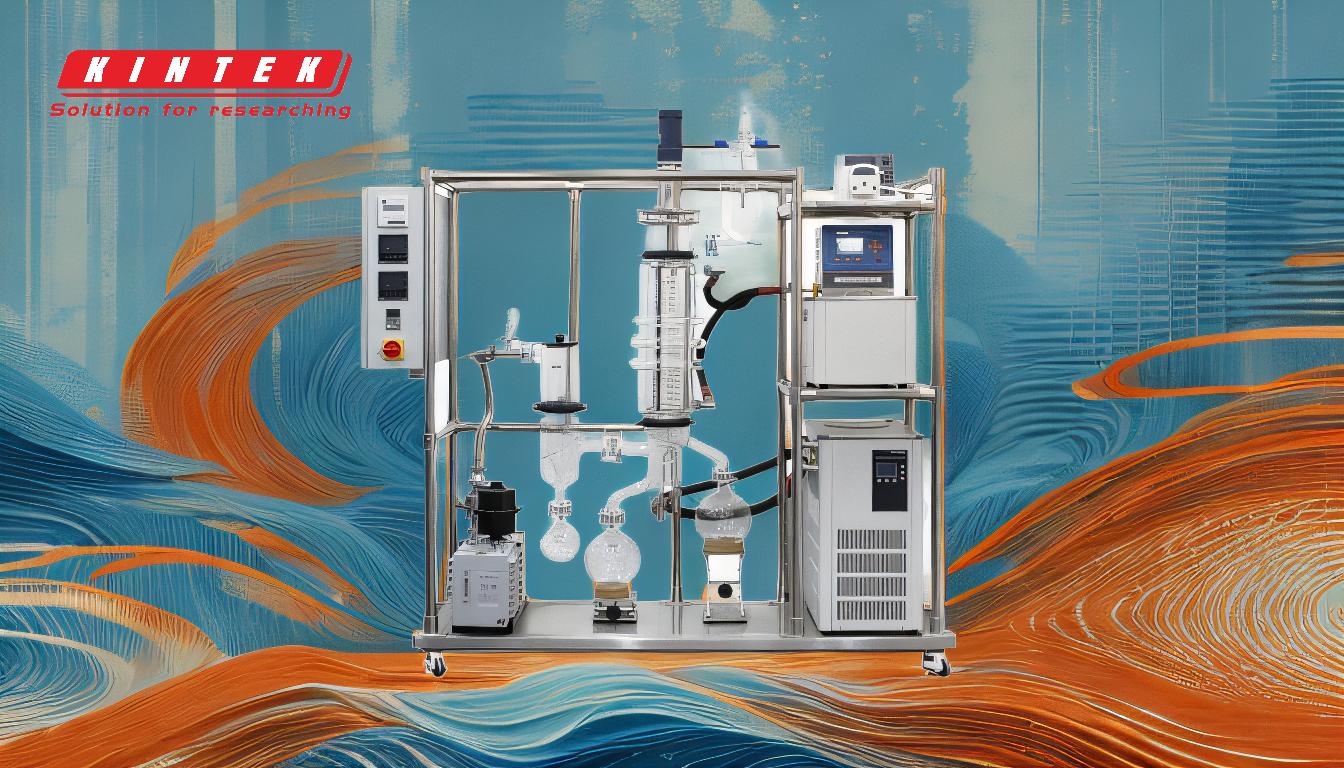Distillation is a fundamental separation technique used in various industries, and understanding the differences between simple distillation and vacuum distillation is crucial for selecting the appropriate method for specific applications. Simple distillation is a straightforward process used to separate liquids with significantly different boiling points, while vacuum distillation is a more advanced technique that operates under reduced pressure to lower boiling points, making it suitable for heat-sensitive or high-boiling-point substances. This explanation will delve into the key differences between these two methods, focusing on their operating principles, applications, and advantages.
Key Points Explained:

1. Operating Principles
-
Simple Distillation:
- Simple distillation relies on the difference in boiling points of the components in a mixture. The mixture is heated until the component with the lower boiling point evaporates, and the vapor is then condensed back into a liquid in a separate container.
- This method is effective for separating liquids with boiling points that differ by at least 25°C to 50°C.
-
Vacuum Distillation:
- Vacuum distillation operates under reduced pressure, which lowers the boiling points of the components in the mixture. This is achieved by creating a vacuum in the distillation apparatus, reducing the pressure inside the system.
- By lowering the boiling points, vacuum distillation allows for the separation of heat-sensitive compounds or those with high boiling points that would decompose or degrade at higher temperatures.
2. Equipment and Setup
-
Simple Distillation:
- The setup for simple distillation is relatively straightforward. It consists of a distillation flask, a condenser, and a collection flask. The mixture is heated in the distillation flask, and the vapor travels through the condenser, where it is cooled and collected as a liquid.
-
Vacuum Distillation:
- Vacuum distillation requires additional equipment to create and maintain a vacuum. This includes a vacuum pump, a vacuum gauge, and specialized seals to ensure the system remains airtight. The rest of the setup is similar to simple distillation but is designed to handle lower pressures.
3. Applications
-
Simple Distillation:
- Simple distillation is commonly used in laboratories and industries for purifying liquids with distinct boiling points. Examples include the separation of water from salt in seawater or the purification of ethanol from a water-ethanol mixture.
-
Vacuum Distillation:
- Vacuum distillation is particularly useful for separating heat-sensitive compounds, such as essential oils, vitamins, and certain pharmaceuticals. It is also used in the petroleum industry to distill crude oil into various fractions without causing thermal degradation.
4. Energy Efficiency
-
Simple Distillation:
- Simple distillation requires heating the mixture to the boiling point of the component being separated. This can be energy-intensive, especially if the boiling points are high.
-
Vacuum Distillation:
- By lowering the boiling points, vacuum distillation reduces the energy required for heating. This makes the process more energy-efficient, particularly for compounds with high boiling points or those that are sensitive to heat.
5. Advantages and Limitations
-
Simple Distillation:
- Advantages: Simple distillation is easy to set up and operate, making it suitable for quick separations where high purity is not critical. It is also cost-effective for small-scale operations.
- Limitations: It is not suitable for separating liquids with close boiling points or for heat-sensitive compounds. The purity of the separated components may also be limited.
-
Vacuum Distillation:
- Advantages: Vacuum distillation allows for the separation of compounds with high boiling points or those that are sensitive to heat. It also reduces the risk of thermal degradation and is more energy-efficient.
- Limitations: The setup is more complex and requires additional equipment, making it more expensive and less suitable for small-scale operations. It also requires careful control of pressure and temperature to ensure effective separation.
6. Comparison with Other Distillation Techniques
-
Fractional Distillation:
- Fractional distillation is used to separate liquids with close boiling points by using a fractionating column, which provides multiple condensation and evaporation cycles. This increases the efficiency of separation but requires more complex equipment than simple distillation.
-
Molecular Distillation:
- Molecular distillation, a type of vacuum distillation, operates at very low pressures and short distances between the evaporator and condenser. It is used for highly sensitive materials, such as natural products, where minimal thermal stress is required.
7. Conclusion
- Simple distillation and vacuum distillation are both essential techniques in the separation of liquids, but they serve different purposes based on the nature of the mixture and the desired outcome. Simple distillation is best suited for straightforward separations where the components have significantly different boiling points, while vacuum distillation is ideal for heat-sensitive or high-boiling-point compounds. The choice between these methods depends on the specific requirements of the application, including the need for energy efficiency, purity, and the sensitivity of the materials involved.
By understanding these key differences, you can make informed decisions when selecting the appropriate distillation method for your specific needs.
Summary Table:
| Aspect | Simple Distillation | Vacuum Distillation |
|---|---|---|
| Operating Principle | Separates liquids with large boiling point gaps | Lowers boiling points under reduced pressure |
| Equipment | Basic setup: flask, condenser, collection flask | Requires vacuum pump, gauge, and airtight seals |
| Applications | Purifying liquids with distinct boiling points | Separating heat-sensitive or high-boiling-point compounds |
| Energy Efficiency | Less efficient for high boiling points | More energy-efficient due to lower boiling points |
| Advantages | Easy setup, cost-effective for small-scale | Ideal for heat-sensitive materials, reduces degradation |
| Limitations | Not suitable for close boiling points or heat-sensitive compounds | Complex setup, higher cost, requires precise control |
Need help choosing the right distillation method for your application? Contact our experts today for personalized guidance!









